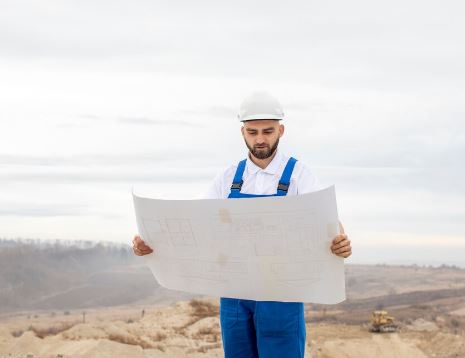The land development sphere is one of the most significant areas of civil engineering that underlies the development of urban areas, the construction of infrastructure, and community enhancement. It entails the development of undeveloped or underutilized land and converting it to residential, business, industrial, or any other area. The land development involves the incorporation of both engineering capabilities, planning, and sustainable designs to develop the drainage systems and roads, and ensure a balance between the environment and conformity to the rules of zoning.
This blog shall address what land development is, its key processes, importance, challenges, and the dynamic future of the emerging field of civil engineering.
Understanding Land Development
Finally, landscaping will increase the aesthetics and functionality of the site. Green spaces, plantings, and public spaces are developed by the engineers and the landscape designers to enhance the sustainability and livelihood standards of the community.
Importance of Land Development in Civil Engineering

The key reasons why the development of land is a necessity are:
- Urban Growth: It helps cities attain sustainable growth.
- Infrastructure development: It will be significant in the land development of roads, utilities, and other services of the government.
- Economic Progress: It drives up employment and real estate value, and also attracts investments.
- Community Improvement: Developed land leads to safer, greener, and connected neighborhoods.
Key Stages in the Land Development Process
1. Feasibility and Site Analysis.
A project starts with a feasibility study in which engineers consider whether the project is viable or not. This incorporates assessing soil conditions, topography, zoning rules, the environment, and utility availability.
Detailed survey – This is done through geotechnical, tree surveys, environmental surveys, among others, to determine the restrictions, such as flood zone, wetland, or endangered species, that may affect the design of the development.
2. Land Use Planning
This is followed by land use planning, in which civil engineers and planners figure out the most effective and efficient manner of utilizing the land. This will entail the study of the needs of the community, the local policies, and future development patterns in order to develop a development scheme that will be functional and environmentally responsible.
3. Engineering Design
At this point, infrastructure detail design commences. Civil engineers design:
- Parking spaces and road networks.
- Utility systems (water, sewer, and electricity).
- Stormwater management systems.
- Grading and drainage plans
This is critical and needs precision to make it safe, durable, and cost-effective.
4. Environmental Assessment and Permitting
The developers have to acquire the requisite environmental clearances and permits before they begin construction. Engineers evaluate the possible influence of the project on the natural ecosystems and offer various measures to reduce the negative impact, i.e., erosion control, water conservation, and sustainable usage of materials.
5. Construction
When the approvals have been obtained, the construction phase starts. This phase will entail clearing of land, excavation, grading, paving, and installation of utilities. The civil engineers manage these activities to design specifications, safety, and quality standards.
6. Finishing and Landscaping.
Finally, landscaping will increase the aesthetics and functionality of the site. Green spaces, plantings, and public spaces are developed by the engineers and the landscape designers to enhance the sustainability and livelihood standards of the community.
Advantages of Land Development
Economic Benefits : The development of land creates a new source of employment, promotes the economy in the neighborhood, and increases the value of property. It forms a platform for new business and industrial development.
Social Benefits : It increases access to housing, healthcare, education, and transportation. Well-developed areas lead to better living conditions and stronger communities.
Environmental Benefits : Modern land development has sustainable engineering, such as green infrastructure, renewable energy incorporation, and Stormwater recycling, to ensure that the ecological footprint of the project is minimized.
Problems with Land Development.
- Environmental Problems: Civil engineers ought to minimize the degradation of the land, protect the environment, and ensure the applicability of environmental laws.
- Financial Constraints: When this planning and forecasting is not accurate, overruns may occur in terms of the budget. Cost control is essential.
- Regulatory Hurdles: Navigating the complex zoning laws, licensing, and regulatory compliance is a tiresome exercise that demands patience.
- Community Concerns: Community objections or environmental or social concerns can affect the project’s time schedules.
Conclusion
The major development carried out by civil engineering is the development of the land, the conversion of arid land to thriving communities. It is a multidisciplinary project requiring creativity, technical prowess, and environmental responsibility.
The variables that indicate the wish of the civil engineer to develop in a sustainable manner include the feasibility and design, up to the construction and landscape. Responsible land development will be the key to future urban and community planning in an ever-changing world.

